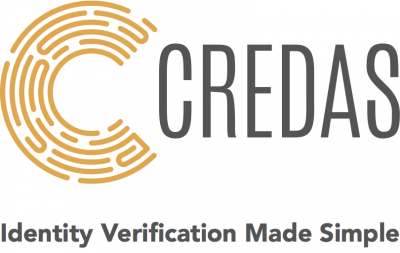Failing to comply with anti-money laundering regulation poses a serious threat to businesses. Take Estate Agents for example – whose average HMRC fine for being around £12,000.
Having a robust AML process is really important and at Credas – we believe there are five essential components that are key to success.

Identity verification made simple
1 – a system of internal controls, awareness and communication
Rigorous internal controls that include policies and procedures should help ensure compliance with AML regulations. Having clear and sufficient knowledge within your business should assist employees in detecting illegal activity.
Independent audits should be completed to identify any discrepancies in financial records, that can indicate suspicious activity. Additionally, this audit control measure can ensure your AML program functioning efficiently.
Your businesses risk assessment should be an ongoing process by which you identify any money laundering risks you face, and to determine the extent of and how to mitigate these risks.
Giving your employees the ability able to communicate openly about your AML processes, will increase trust and transparency can be achieved, ensuring everyone is working effectively to reduce your business risk to AML.
2 – Appoint a Compliance Officer and Build a Culture of Compliance
A compliance officer works to implement and review your AML process. Reporting directly to management, a compliance officer would ideally be trained and qualified in AML requirements, and have access to all necessary resources.
In addition to implementing policies and procedures to support your AML policies, consider promoting a culture of compliance within your organisation. Thomson Reuters suggests that six primary factors contribute to a workplace culture that encourages compliance.
3 – Use Effective Technology
Digital solutions can improve an AML process if they complement your businesses’ systems and make it easy for you to process the required checks. If you are already using a CRM or other business support systems, you may look for something that can integrate like Credas’ API.
Since GDPR came into force back in May 2018 its also sensible to ensure that you are only retain copies of what is necessary when it comes to customer information, so using a cloud-based solution that allows you to view verified documents and data check results in one place could ensure you are compliant.
Using technology can also facilitate a quick response to any issues or flags raised about potential clients, allowing you to make an informed decision on the best way to mitigate risk to your business.
4 – Incident Reporting and Case Management
A system that helps keep track of incidents can make it easier to identify and address risks before they result in serious legal issues.
When employees are aware that their organisation values case management system, they are more likely to report suspicious activity or misconduct.
5 – Training and Education
A robust and comprehensive training process should be implemented to improve staff awareness of anti-money laundering regulations, spotting suspicious activity, and the steps an employee should take once report this to management.
Regular training programs can keep employees informed on essential reporting requirements and record keeping expectations, helping them understand their role within the organisation’s AML policies and the importance of compliance.
CLICK HERE for your free trial of the incredible Credas software. Verify your clients from anywhere.







